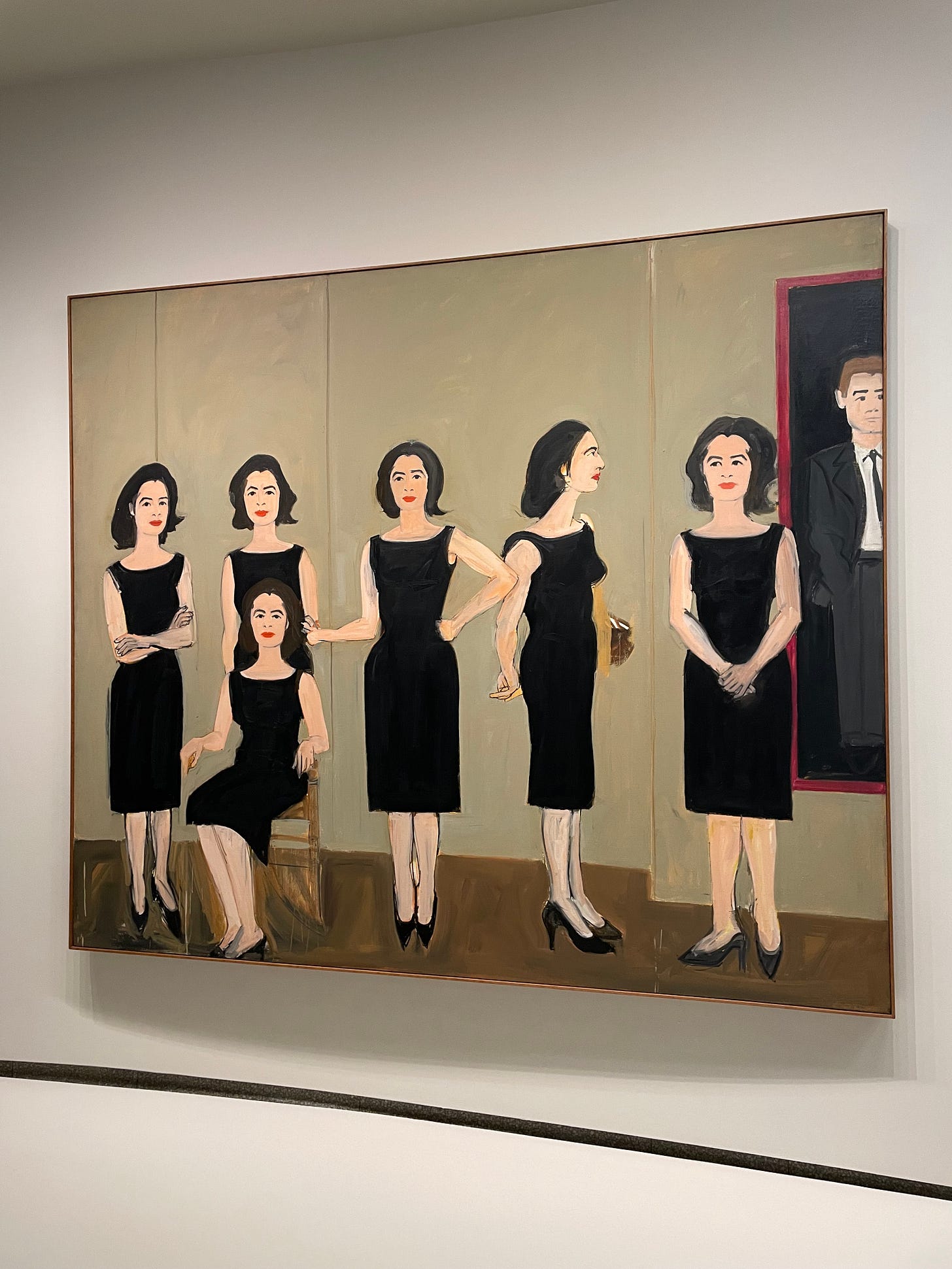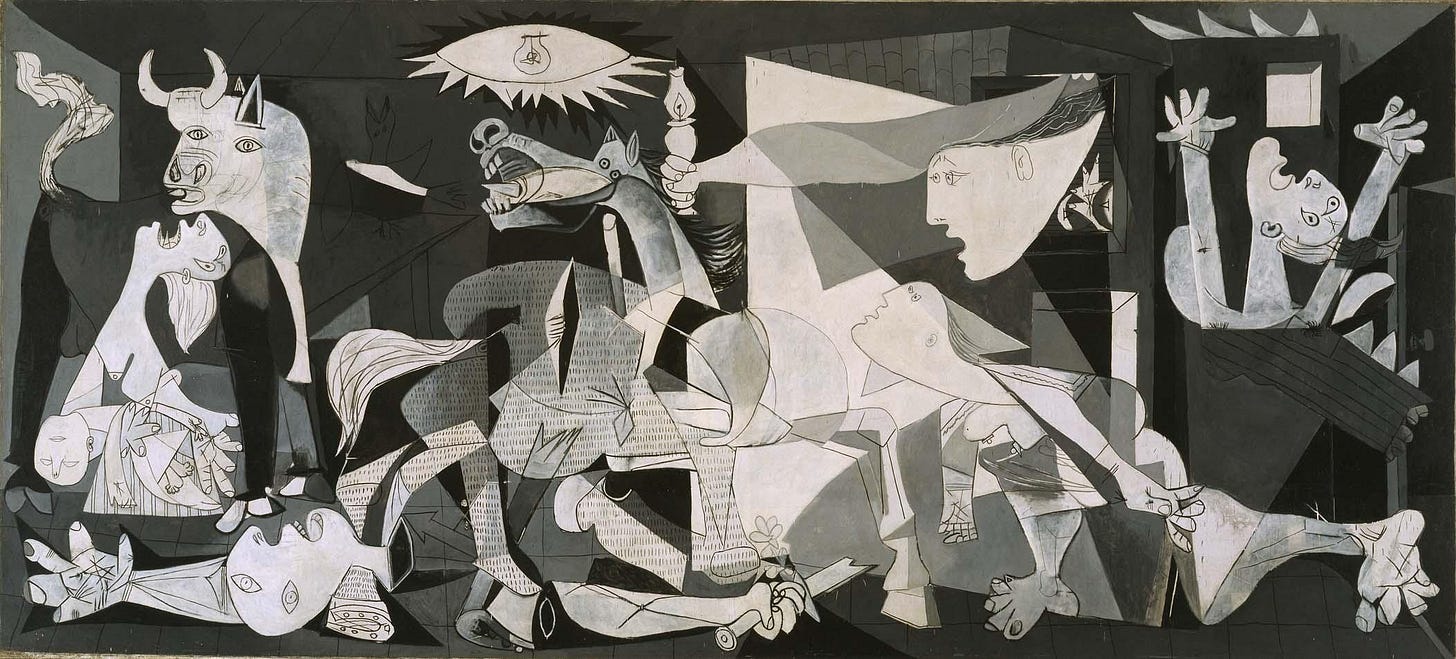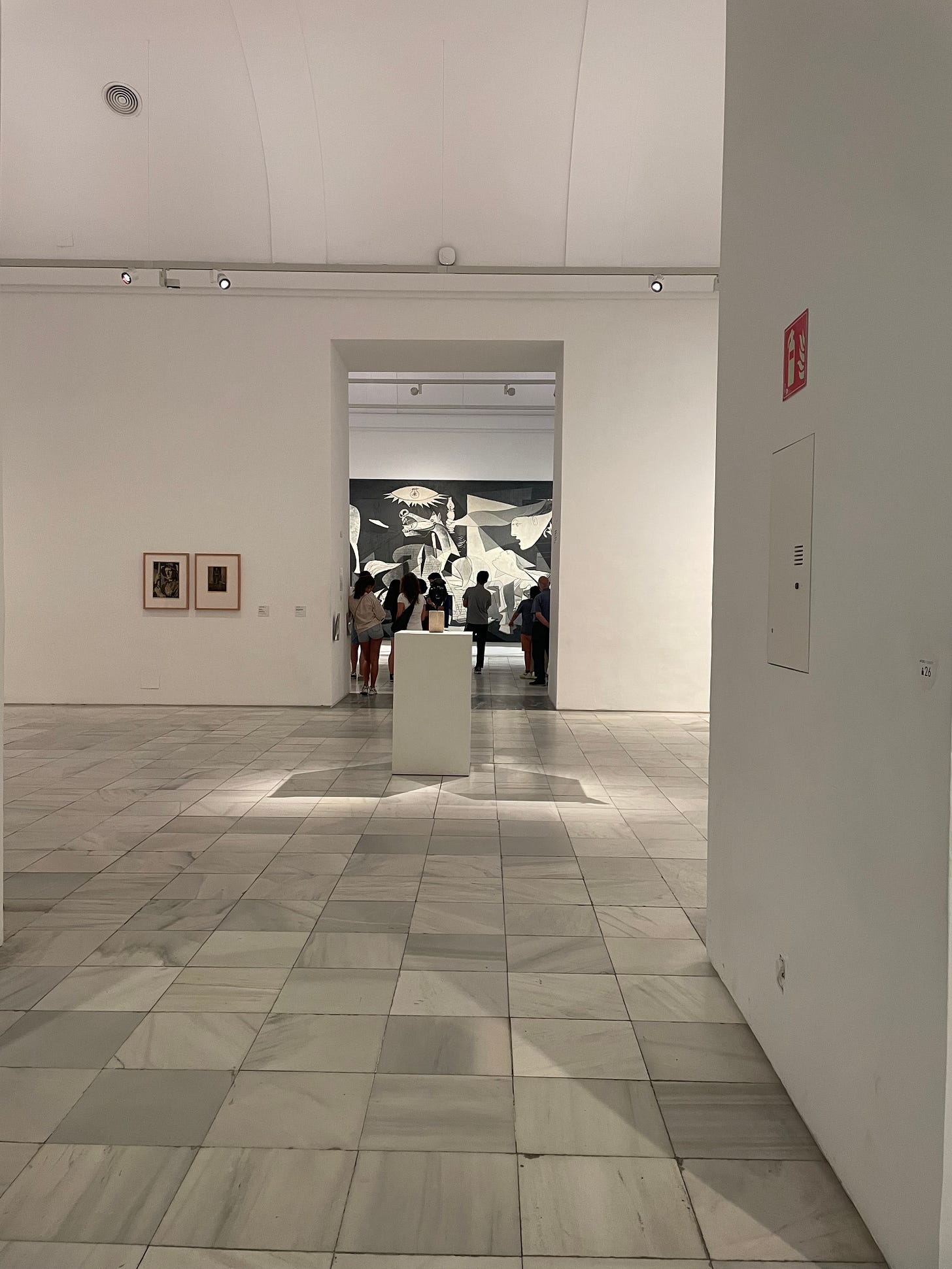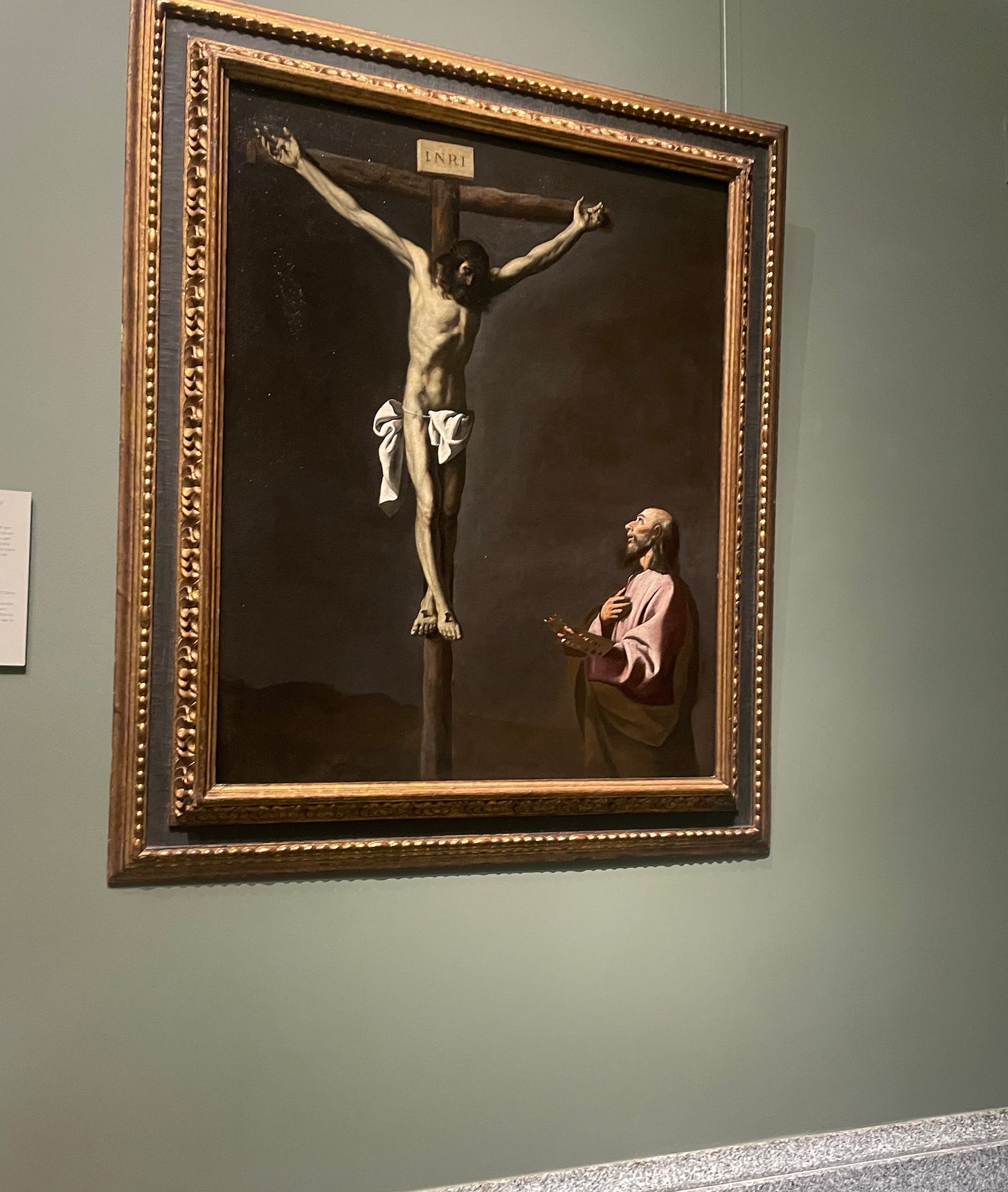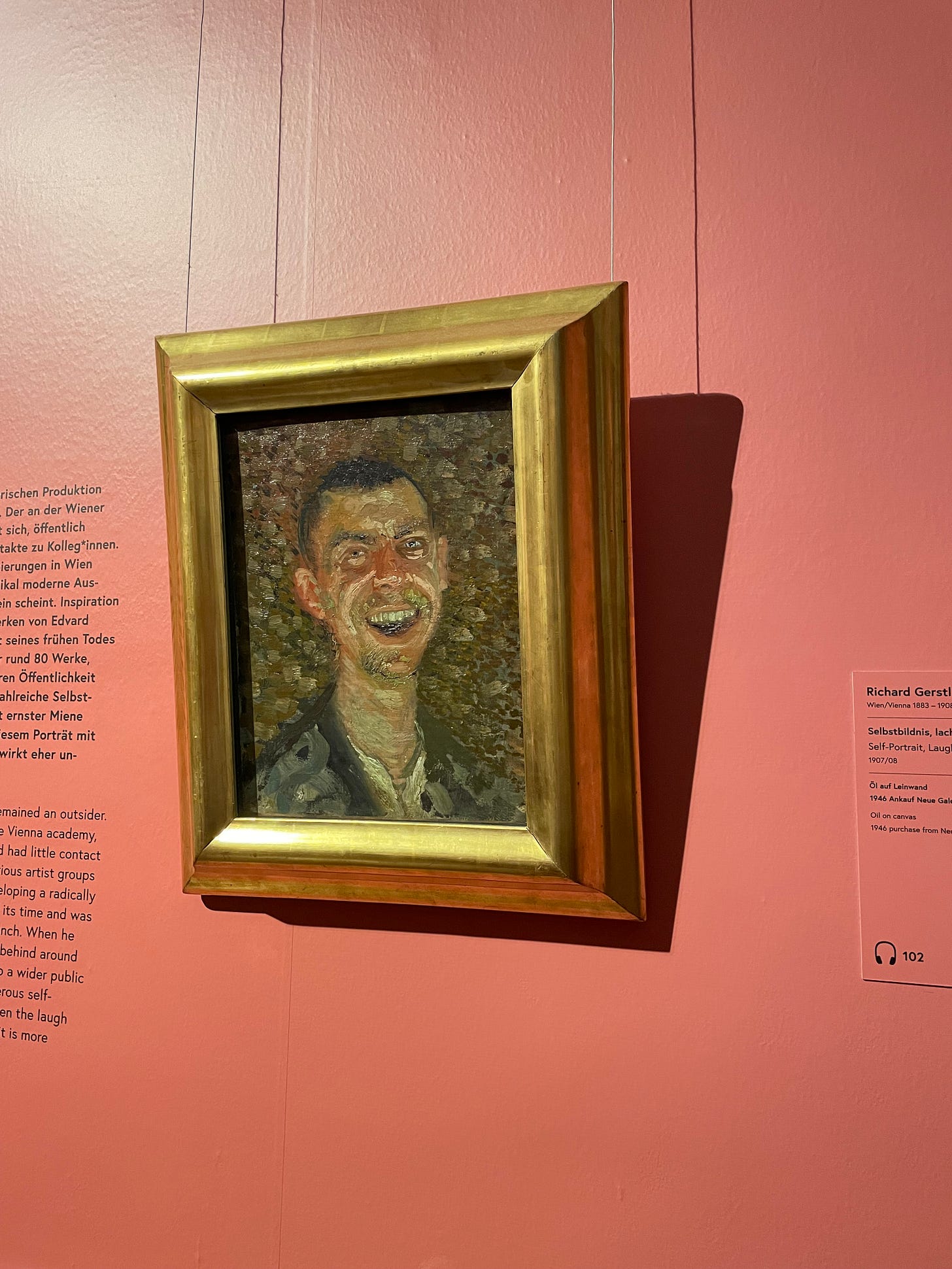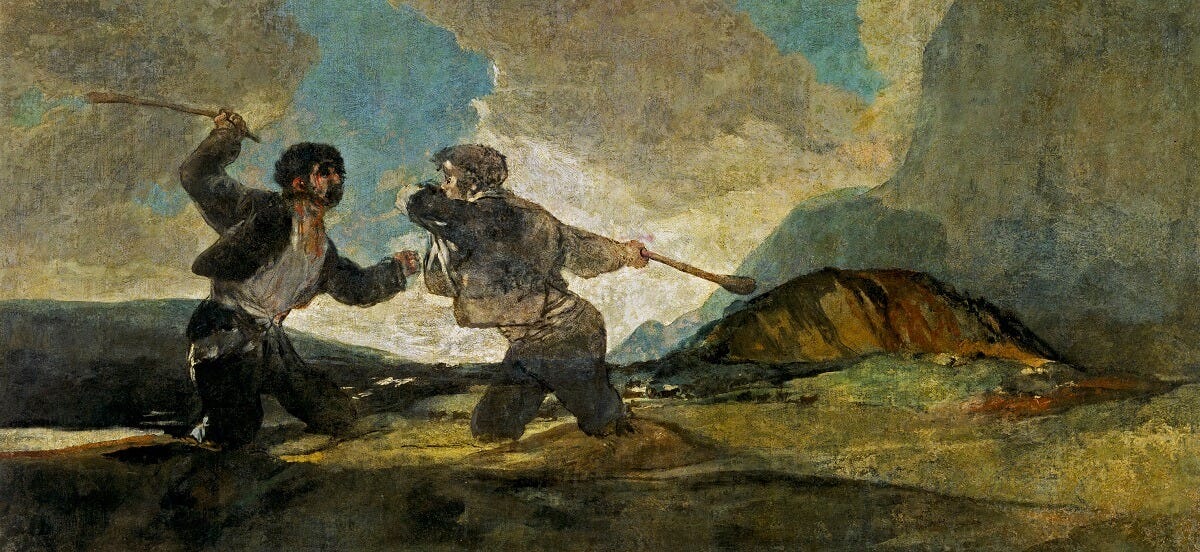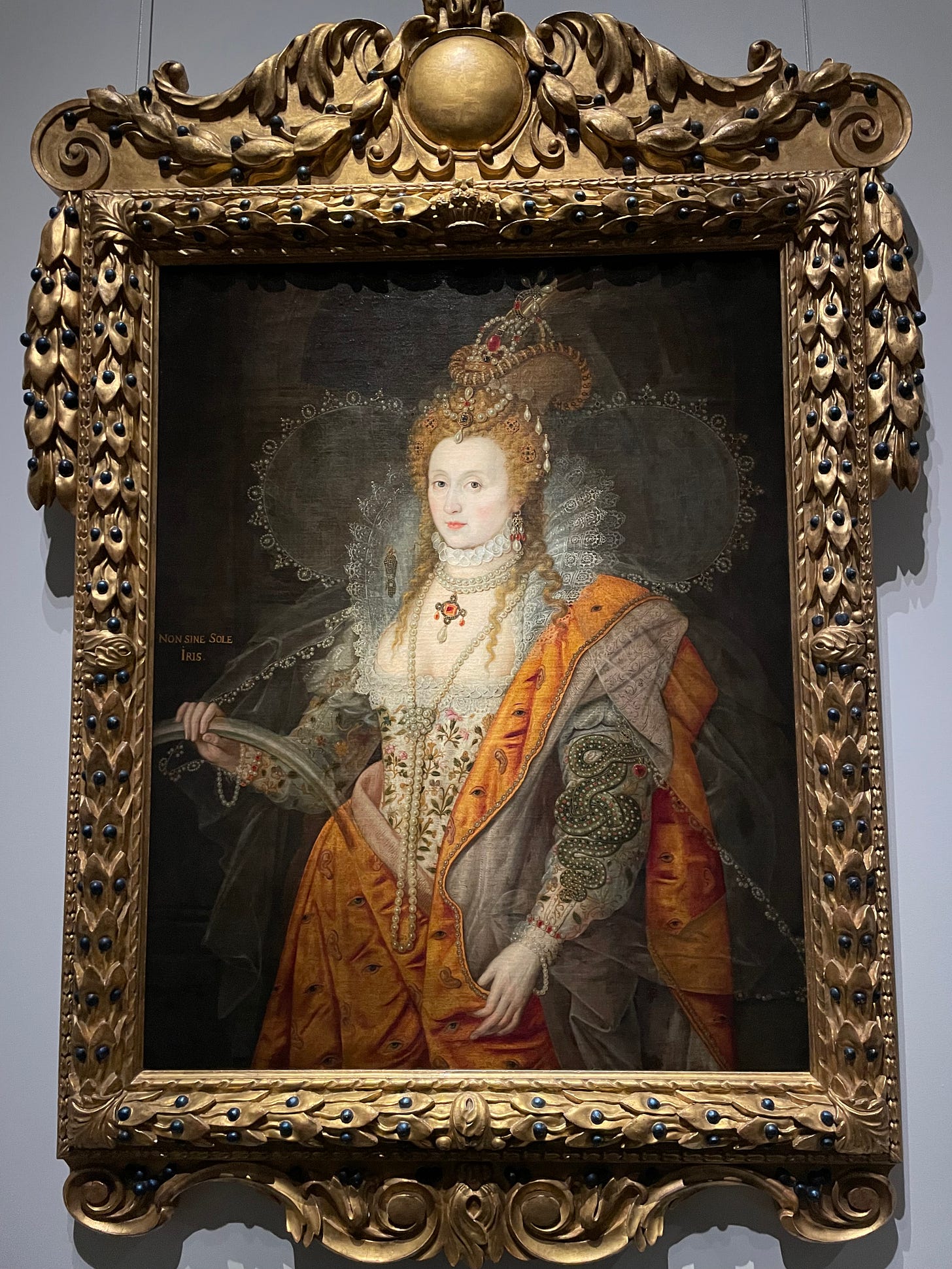Thinking has always been an aspect of art but it feels like in contemporary and modern eras the intellectualization of the art is sometimes at the expense of aesthetic beauty. This, I believe, is fine (I am so brave). I am a big fan of thinking and being intellectually challenged by art is important, it can foster curiosity, creativity, and a certain kind of artistic openness and I believe is valuable and important. However, sometimes the experience I have while looking at art is more guttural than intellectual, like my body is responding in a way that isn’t totally rational or intellectual (can you tell I just read Susan Sontag’s Against Interpretation??). Anyway, as I have thought about that feeling, a few pieces of art that I have experienced came to mind.
The Black Dress by Alex Katz
The Guggenheim in NYC
Not sure what emotion to label this as, it just kinda shot right through me. I guess it reminded me of John Berger’s quote from his great book Ways of Seeing:
“A woman must continually watch herself. She is almost continually accompanied, by her own image of herself. Whilst she is walking across a room or whilst she is weeping at the death of her father, she can scarcely avoid envisaging herself walking or weeping. From earliest childhood she has been taught and persuaded to survey herself continually. And so she comes to consider the surveyor and the surveyed within her as the two constituent yet always distinct elements of her identity as a woman. She has to survey everything she is and everything she does because how she appears to men, is of crucial importance for what is normally thought of as the success of her life. Her own sense of being in herself is supplanted by a sense of being appreciated as herself by another....One might simplify this by saying: men act and women appear. Men look at women. Women watch themselves being looked at. This determines not only most relations between men and women but also the relation of women to themselves. The surveyor of woman in herself is male: the surveyed female. Thus she turns herself into an object -- and most particularly an object of vision: a sight.”
This painting was done by a man but it was of his wife, and I don’t know, I suppose my imagination kind of took over and I thought of the ways that when I buy a new dress, I imagine myself doing things in that dress. On the most basic level, I think about how it looks on me; how it will look from the back, front, and sides. I think about how it fits my body, how that body will then fit into a room, how the dress fits into my existing wardrobe, how that fits into my self-perception, and the fantasy of what I want to be and display myself to the world embodied in that wardrobe. Then I think of how I will walk into a room, how beautiful I will be, how everyone will fall in love with me, or maybe, terrifyingly, no one will notice my new dress at all, or think I look bad or like I weigh more than I really do. Ultimately I dismiss my fantasies, label them, unhelpfully as selfish, childish, fatphobic, and vain– and after all that? It’s just a black dress. There is something beautiful but also quite ordinary about the woman presented. I had never encountered a piece of art that made me think about these things but also viscerally feel the weight of them– maybe it was the repetition of her body in that small space, crowding herself out.
Guernica by Picasso
Museo Nacional Centro de Arte Reina Sofia in Madrid
I simply cannot stress how big this painting is. It is totally immersive– in order to see the whole thing, you have to step way back, so far back that my near-sighted eyes started to blur the outlines of the figures. This means that you actually see the painting best by not seeing all of it at the same time (kinda like the water lilies). It is so dark and scary; the images warp in ways that, at first glance, might seem cartoonish but then the more you walk through the painting, it works. It felt like a snapshot of violent, terrifying moments that are twisted into terrifying slow motion. I have never been in a war nor a war-torn place but looking at this painting– an imagination of war rather than war itself– I felt scared. The black and white of the painting was fascinating to me– the imagination of Picasso melding with the black and white text of newspapers to then coagulate into this painting and then meld with my own imagination and remove seemed so strange and visceral.
The Venus of Urbino by Titian
Uffizi Art Gallery in Florence
Look, this is the sexiest woman I have ever seen in my entire life. I was in the Uffizi art museum in Florence to see the Botticelli’s, when I wandered into this woman’s gaze. I had studied her before, read about the male gaze in this painting, the way Manet came to invert expectations with this trope in Olympia and yet, I kid you not, I was like this woman is in love with me and would like to have sex with me. I really felt drawn to her, not just because of my attraction to her but what felt like her attraction to me. How did he do that? How did he get the eyes and the expression such that somehow that was communicated? It was like a tractor beam in person and totally surprised me. Gay but just for the Venus of Urbino I guess??
The Crucified Christ with Painter by Diego Velazquez
Museo del Prado in Madrid
So the artist is God– God is looking at his handiwork (a dead Jesus) and is pleased– this is his masterpiece. It is the culmination of all of his efforts, all his skills and talents have come to bear on this singular moment. And it is a work of art– the red of the blood, the flaking lips, the pale skin, the sagging body, the tearing flesh. He has done good work and he is proud of himself. The painter is the god of his work. He has painted himself in to show the reality of what is– he is the painter of a dead Christ just as God is the creator of a dead son. I loved the honesty and brutality of this painting, and the arrogance. It made me feel theological discomfort and aesthetic pleasure.
Self Portrait Laughing by Richard Gerstl
Belvedere Palace in Vienna
I looked at this painting and recognized it– something about the way the edges around the face blurred and the look in the eyes. It totally frightened me– my pulse started reverberating through me louder and stronger. The face was energetic and expressive but there was something dull and corpse-ish in the eyes. It reminded me of an expression I had seen before– a kind of rage that has passed from energy to laughing absurdity to deadened nihilism and back to a manic energy again. I read the plaque on the side and realized why it seemed familiar– this was a self-portrait of the artist he did days before killing himself.
Fight with Cudgels by Goya
Museo del Prado in Madrid
This is one of Goya’s black paintings– or at least it was presented with them in the museum in Madrid. Not to be deeply pessimistic on the main but sometimes, I don’t know if you have noticed, humanity is a rough crowd. Our ability to articulate that war is bad, that everyone is human and worthy of respect, that we can and should take care of each other, that no one should go hungry, that we should not be greedy etc.-- all of those things do not stop us from doing horrifying things to each other and letting each other suffer. And it is not just on a collective scale! In intimate relationships, knowing what we should and can do does not stop us from doing ill to each other. We are so powerful and yet we choose to do so much ill toward one another. This painting stopped me in my tracks. It felt like the perfect visual for this kind of cyclical torment, the violence of it, the inevitability. Their legs! Whatever they are in, they are in it up to their thighs. The cudgels are blunt and brutal, they are not going to release themselves, they are going beat each other to death in order to win. All of this violence and tragedy, and in the background? It is a stunningly beautiful landscape and sky– pastoral even. The greens and blues are sublime, the sky is creamy with a watercolor-type quality. It would be lovely– if not for the two men stuck in the mire trying to kill each other. I couldn’t look away and it made me feel a little nauseous.
The Rainbow Portrait of Queen Elizabeth I (c.1602). Attributed to Isaac Oliver.
Metropolitan Museum of Art in NYC
At first it seems like a normal court portrait– Queen Elizabeth, looking unrealistically pretty in a comically massive dress. But then you look a little closer and there are eyes– yes, human eyes– that seem to be stitched into the divots of her dress. This painting freaked me out– it is so gross and so bodily and the metaphor is so obvious: I am the Queen, I see and hear everything. It also made me feel that niggling little feeling that happens whenever I come across something in history that I thought was specific to the modern age like the power and influence of major corporations. There is much to say about the state of surveillance of the state in the modern era and the way that Elizabethan art metaphors have become Silicon valley realities but it certainly gave me pause to consider the demonstration of power and the threat subtly contained in this court portrait.




